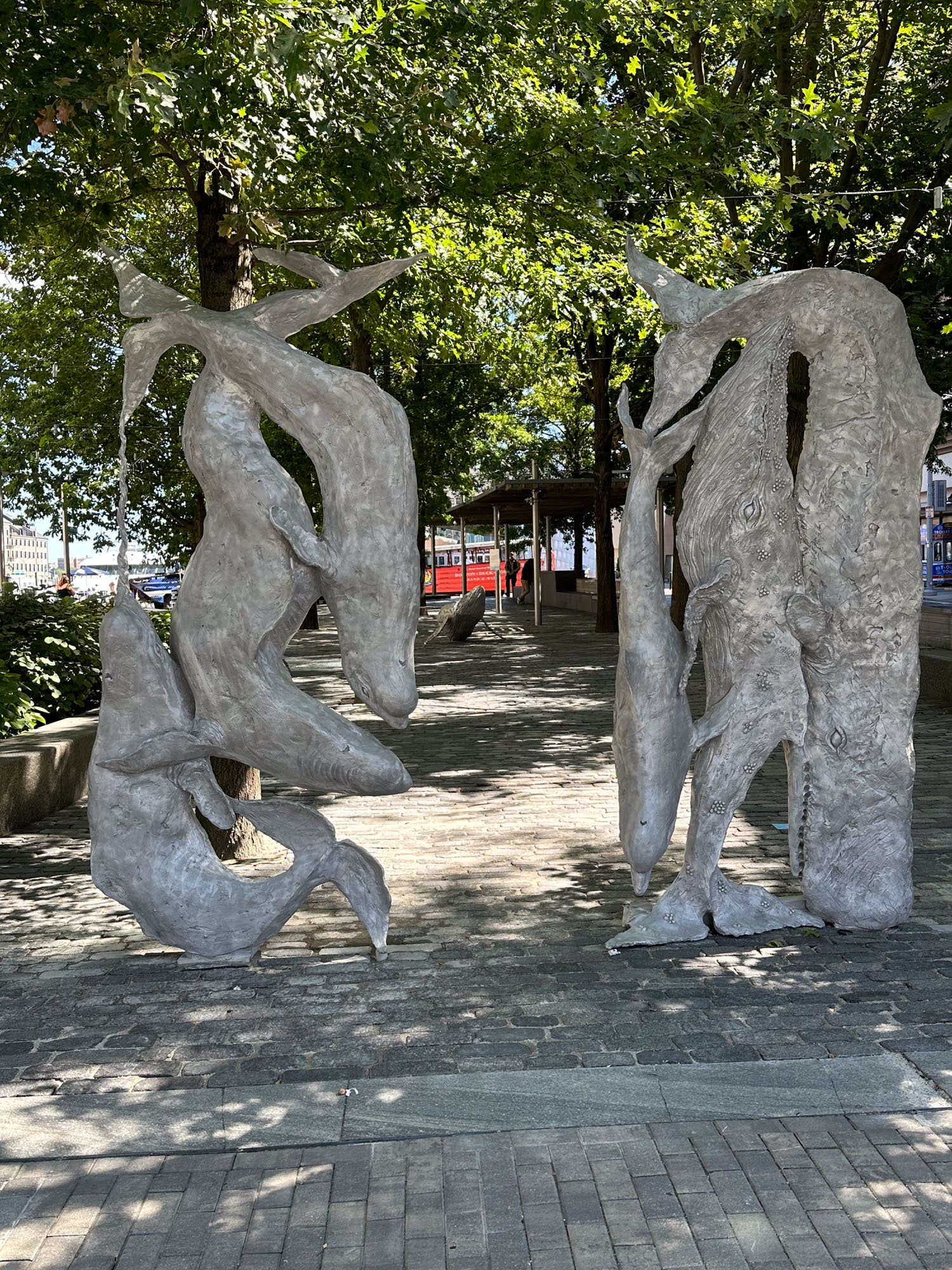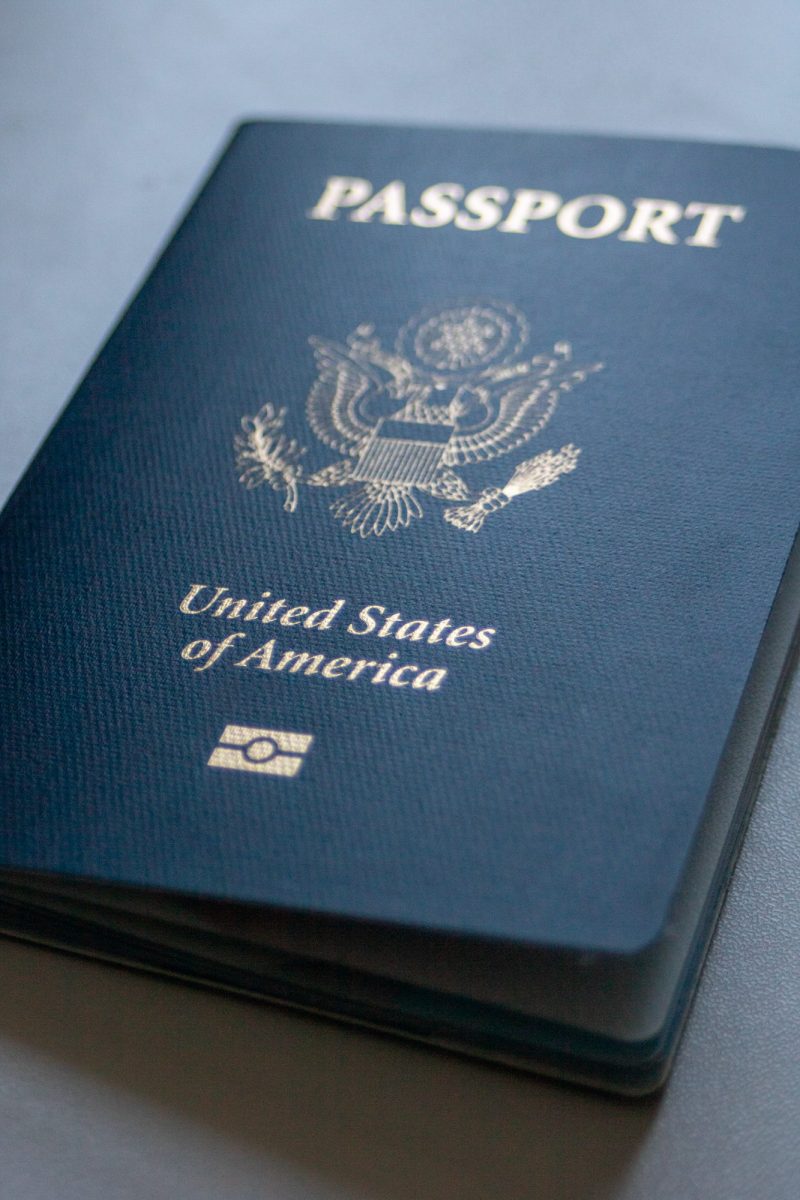“Whale Song,” a new public art installation created by French artist Jean-Marie Appriou to demonstrate the historical and mythological significance of whales, premiered at Boston’s Central Wharf Park on Wednesday.

Pedro Alonzo, an independent curator specializing in public, urban art, curated “Whale Song” in collaboration with the non-profit organization Now + There, now known as Boston Public Art Triennial, according to a press release. “Whale Song” is the fifth public art installation that he has curated in Boston Central Wharf Park.
Appriou, who does not speak English, wrote to The Daily Free Press using a translator that Alonzo called him asking to create the installation while Appriou was returning from Greenland, where he had been observing whales. According to Appriou, “the region around Boston is very inspiring,” which includes New Bedford, the initial setting of the whale-starring novel “Moby Dick.”
“There was an entire world that instantly drew me in,” Appriou wrote. “The whale, you could say, practically imposed itself on the project.”
The installation is a “story in three parts” featuring three cast-aluminum sculptures that illustrate the past, present and future of whales and their place in the human world, according to Appriou.
The first piece, “Hommage,” depicts a seated whale and symbolizes the history of extensive whale hunting in the 19th century, according to Appriou. The whale in the second piece, “A Long Journey,” is a boatlike sculpture that represents the mythological presence of whales and their “existential state in the present.”
The third and final piece, “The Gate of Whales,” features multiple species of whales, all in various states of movement, according to Appriou. The whales are situated to form a “Northern Gate” and a “Southern Gate.”
“There’s more movement in the Northern Gate and more linearity in the Southern Gate,” Appriou wrote. “It’s meant to illustrate the parallels between whales and humanity and how we can project ourselves into a future in constant motion and migration.”
Natasha Zinos, a communications associate at the Boston Public Art Triennial, said she “loved” the texture and three-dimensionality of the pieces, as well as the installation’s proximity to the harbor.
“There’s so much that goes on right on the water here, and I think it’s an important reminder that there is a whole world just beyond this,” Zinos said.
According to Appriou, he hopes those who come across “Whale Song” physically engage with the pieces, whether they choose to sit on the tail of “Hommage” or in the boat-like structure of “A Long Journey,” as if the sculptures are “urban furniture.”
The artwork stands a short walk away from the New England Aquarium and across the street from docked whale cruise ships, Alonzo said. He said the installation’s location, as well as Boston’s extensive history of whaling, add layers of relevancy and “immediacy” to the installation.
“Humanity behaves as if the planet is ours, and everything on it belongs to us, and we can do with it what we want,” Alonzo said. “This piece reminds us that these animals have been around on the planet a lot longer than we have.”
Public art projects like “Whale Song” have appeared across the city in recent years, and some people have praised the ability of public art to bring communities together.
Q Bouldry-Morrison, an attendee at the opening celebration, who uses they/them pronouns, said they think public art is a “really important way to build community,” especially in the wake of COVID-19, which caused society to undergo “a long period of isolation.”
“I think for a lot of folks, indoor, packed gatherings still remain inaccessible and difficult or scary,” Bouldry-Morrison said. “Bringing art outside and out into the world adds a layer of accessibility for some people who otherwise wouldn’t be able to engage with it.”
Alonzo echoed the importance of public installations, referring to art as a medium that “can speak to everyone.”
“There’s something singular about art, unique about art, that is appealing to us,” Alonzo said. “I think it can help us see the world in a different way.”






















































































































